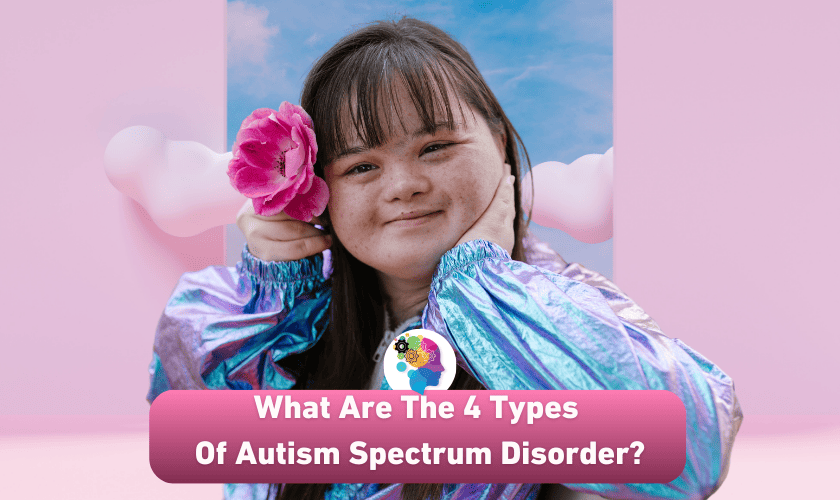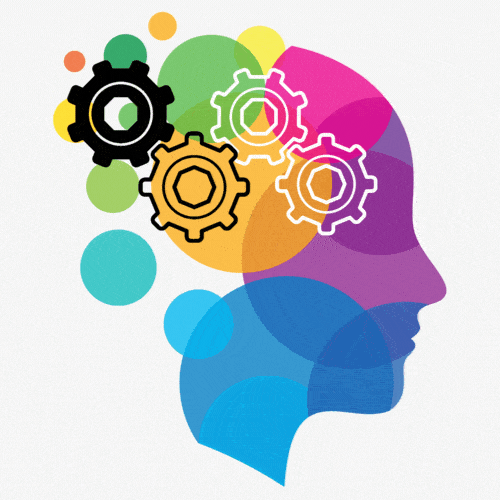In today's fast-paced world, finding moments of mindfulness can be a challenge. Embracing "The Power of Now"...

- Asperger Syndrome
- Autistic Disorder
- Childhood Disintegrative Disorder
- Pervasive Developmental Disorder –> Not Otherwise Specified (PDD-NOS)
Asperger Syndrome is a developmental disorder that affects social interaction, communication, and behavior. People with Asperger's may have difficulty understanding social cues, making eye contact, or engaging in typical social interactions.
They may also have narrow interests and engage in repetitive behaviors or routines. While there is no cure for Asperger's, early diagnosis and intervention can help individuals with the condition develop coping strategies and improve their ability to communicate and engage with others.
Autistic Disorder, also known as classic autism, is a developmental disorder that affects social interaction, communication, and behavior. People with autistic disorder may struggle to understand social cues, engage in conversations, and express their emotions.
They may also have a narrow range of interests and engage in repetitive behaviors or routines. Autistic disorder is part of the autism spectrum of disorders and can range from mild to severe.
Childhood Disintegrative Disorder (CDD) is a rare developmental disorder that affects young children. Children with CDD experience a significant loss of previously acquired skills in multiple areas, including language, social skills, and motor abilities.
The loss typically occurs between the ages of two and four years old, and the regression is often rapid and severe. Unlike other autism spectrum disorders, the onset of CDD is later, and children may have had typical development up until the regression.
Pervasive Developmental Disorder (PDD) is a group of developmental disorders that affect communication, socialization, and behavior. PDD encompasses a range of conditions, including Autism Spectrum Disorder, Asperger's Syndrome, and Childhood Disintegrative Disorder.
Individuals with PDD may have difficulty with social interactions, communication, and may engage in repetitive behaviors or routines. While the specific symptoms and severity of PDD can vary, early diagnosis and intervention are crucial for improving outcomes.
Autism spectrum disorder (ASD) is a condition that makes it harder for some people to talk, make friends, and understand social cues. It's like their brains are wired a bit, and it can affect how they communicate and behave. Doctors diagnose it in early childhood and it affects individuals depending on their level of functioning. [1]
There are different types and levels of autism. In this article, we will take a look at the "four types of autism." It's important to note that doctors don't categorize autism this way anymore since 2013. [2]
We'll also talk about the signs, features, and ways to help people with different types of autism spectrum disorders (ASD). By understanding the differences between each condition, we can better help those with autism in our lives.
Here are the types of autism:
Asperger's Syndrome is a condition that makes it hard for people to communicate and interact. It's a kind of autism, but it's milder, and some people call it “high-functioning autism.” People with Asperger's can live normal, independent lives.[3]
One of the main challenges for people with Asperger's is dealing with social communication. They might find it hard to understand and respond to social cues like the tone of voice, facial expressions, and body language. Here are some other common things that people with Asperger's might experience:
Doctors usually diagnose Asperger's in kids or teenagers, but adults can find out they have it too. [3]

Classic autistic disorder is the most severe form of autism. People with this condition have a hard time communicating and interacting with others, and they often do the same things over and over again.
Understanding both spoken words and unspoken signals like facial expressions or gestures can be tough for them. Starting or keeping a conversation going isn't easy, and making friends can take a bit more time. [4]

Childhood Disintegrative Disorder (CDD), or Heller’s Syndrome, is a rare type of autism that happens in kids under ten years old. Kids with CDD suddenly start losing skills they used to have, like talking, moving around easily, and communicating with others. We don't really know why this happens, and it's pretty rare, affecting less than one in every 100,000 kids. [5]
Kids with CDD are okay at first, but between ages two and four, parents and doctors start to notice something's wrong. The kids begin to lose the skills they learned, like speaking and playing with others. Their ability to move and communicate starts to get worse. [5]

PDD-NOS stands for Pervasive Developmental Disorder-Not Otherwise Specified, and it's one of the types of Autism spectrum disorders. Sometimes, people call it "subthreshold autism." Kids with PDD-NOS might be a bit slower to develop skills in talking, making friends, and certain behaviors. [6]
Kids with PDD-NOS have some of the same challenges as kids with other types of autism. They're kind of in the middle - they might have a harder time than some, but an easier time than others. [6]
For example, they might find it tricky to make friends their own age, understand what others are trying to say without words or play pretend games. They might also do the same thing over and over again, be super interested in one thing, or be sensitive to how things feel, sound, or taste. Changes in their usual routine can be a big deal for them.
So, in a nutshell, kids with PDD-NOS have some challenges with talking, socializing, and behavior, but it's not as severe as classic autism. Intrusive thoughts with autism can sometimes exacerbate these challenges, causing additional anxiety or stress. [6]

In 2013, scientists at the National Institute of Mental Health (NIMH) did a study that helped us understand the four different categories of autism we talked about earlier. [1]
They found out that people with any type of autism often find it hard to make friends and connect with others. This can make social situations tricky for them. But, not everyone faces the same level of challenge - it can be different for each person and depends on the type of autism they have.[1]
The NIMH scientists also discovered that the lines between the different types of autism can be blurry. This means a person can have symptoms of more than one type of autism at the same time, like Autistic Disorder and Asperger's Syndrome. This can make figuring out the exact type of autism and the best way to help a bit complicated. [1]
When it comes to autism, there is no one-size-fits-all treatment or therapy. Each person’s needs and preferences vary significantly, so an early diagnosis means treatment can begin soon. Fortunately, there are many resources available to help those with autism disorder.
Some of the most common treatments include:
You can take this quick general mental health test to check your general mental state.
Autism is a condition that can be pretty complex and different for each person who has it. There are four main types: Asperger Syndrome, Childhood Disintegrative Disorder, Autism Spectrum Disorder, and Pervasive Developmental Disorder – Not Otherwise Specified (PDD-NOS).
Even though there's no cure for autism, there are treatments and therapies that can help manage the symptoms. Every person with autism is unique, so they might need a special plan that's just for them to help them be their best selves.
Getting the right diagnosis and support is super important. With the right help, people with autism can live meaningful lives and do a lot of awesome things!
The most recent diagnostic criteria for autism spectrum disorder, outlined in the Diagnostic and Statistical Manual of Mental Disorders (DSM-5), no longer distinguishes between different types of autism or subtypes. Instead, it recognizes a single diagnosis of autism spectrum disorder with varying levels of severity.
Autism severity is measured on three levels:
Individuals with severe autism may have significant difficulty with communication, social interaction, and behavior and may require extensive support and assistance to meet their daily living needs.
⚠️Disclaimer⚠️:
The information provided on this health blog is for informational purposes only and is not intended as a substitute for professional medical advice, diagnosis, or treatment. Always seek the advice of your physician or other qualified health provider with any questions you may have regarding a medical condition.
In today's fast-paced world, finding moments of mindfulness can be a challenge. Embracing "The Power of Now"...
In our fast-paced world, finding moments of tranquility can be a challenge. Meditation apps offer a convenient...
In our fast-paced world, taking time for self-reflection and mindfulness is essential for well-being. Journaling can be...
In today’s fast-paced world, managing stress has become an essential aspect of maintaining overall well-being. Two popular...
Dissociation can be a challenging experience, especially the one that happens at work. Are you experiencing dissociation?...
Bionic reading transforms the reading experience for ADHD individuals by guiding the eyes for focus and understanding. Dive into the world of bionic reading.
Explore the complexities of postpartum depression and genetics in our blog 'Is Postpartum Depression Hereditary?' for insights into maternal mental health.
